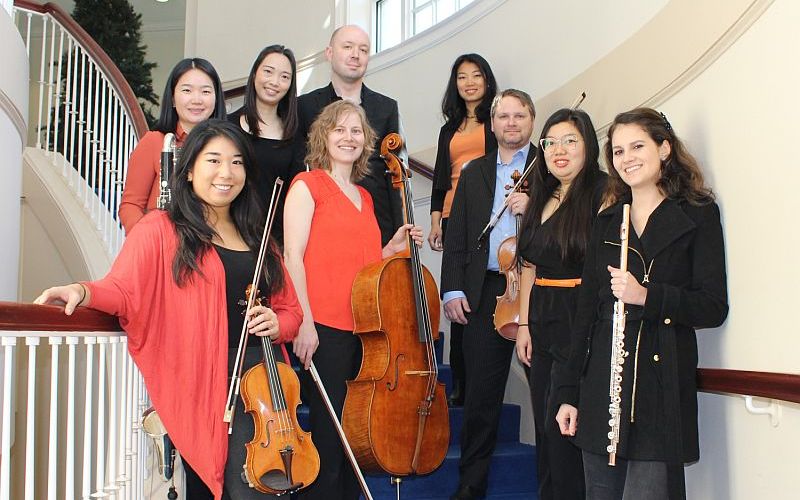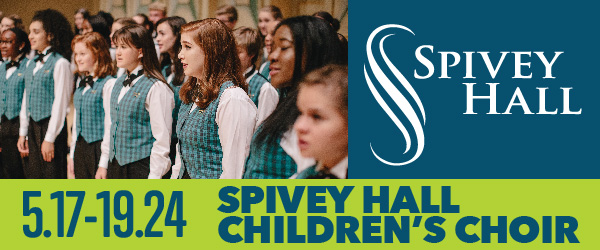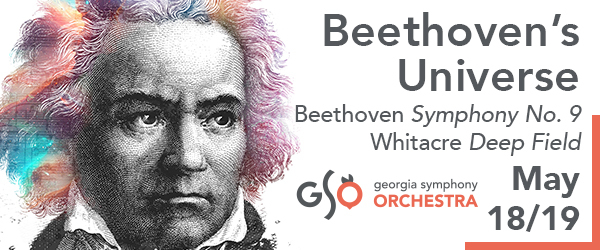Mark Gresham | 13 NOV 2019
Atlanta’s new music scene benefited mightily from Sunday’s debut of Ensemble VIM at Kellett Chapel in Buckhead. The new group is he latest contemporary ensemble to establish itself in the city, following on the heels of Matthieu Clavé’s SoundScape series which, ironically (and in typical Atlanta fashion), performed at Spivey Hall that very same afternoon. With Bent Frequency as the extant granddaddy of active contemporary ensembles in town, but a couple like Sonic Generator and Chamber Cartel in semi-hibernation, both Ensemble VIM and SoundScape Series are welcome fresh entrants into Atlanta’s new music mix.
Ensemble VIM is the brainchild of pianist Choo Choo Hu, flutist Nicole Frankel and conductor Chaowen Ting – a triumvirate of co-founders who act as its artistic and administrative team. The group’s interesting name implies multiple meanings: VIM can be taken as the 19th-century American word that means “energy and enthusiasm” (as in the expression “vigor and vim”) or as an acronym for “Very Interesting Music.”
Sunday’s program opened with Jennifer Higdon’s Smash, a five-minute quintet that lived up to its name in terms of pushing the forward from start to finish, using instruments which have known capacity for fleet-fingered velocity, with the responsibility for rhythmic drive and intensity well among the players. Violinist Grace Kawamura Stubbart, flutist Nicole Frankel, clarinetist Jiyeon Choi, cellist Laura Usiskin and pianist Choo Choo Hu boldly performed the quintet version of this work, which originally was scored as a sextet that also included viola.
The same quintet of players followed the Higdon piece with the lighter but also rhythmically driven sweet air by David Lang. Then name is taken from a family dentist’s colloquial term for nitrous oxide (laughing gas). Lang found for himself a parallel in music to its effects (causing the patient to ignore unpleasantness that comes with having dental work done). In his program notes, Lang states how “it is much easier to comfort the listener than to show why the listener might need to be comforted” and yet give them a little of both. In a post-Minimalist fashion, motivic fragments flow by in a most colorful interleaving of parts from the “Pierrot ensemble” mix of instruments.
Percussionist Joseph Petrasek, violinist Grant Gilman – in this instance playing viola stead – joined the group onstage while Frankel took a break and Choi swapped over to bass clarinet for For I prefer living in color (2017) by Sarah Gibson. The work was inspired by pop-visual artist David Hockney’s installation, Snail’s Pace, involving a large dark room with shifting, vibrantly-colored lighting, as well as “the energizing curves and changing views found along Mulholland Drive” – a street and road in the eastern Santa Monica Mountains of Southern California. The music itself broadly reflected the analogies with credible success, as far as that can be judged without seeing either Hockney’s work nor cruising Mulholland Drive first-hand. A short video of Gibson speaking preceded the performance.
Te final work on the program was one somewhat familiar to Atlanta’s new music audiences: Workers Union (1975) by Louis Andriessen, with Frankel rejoining the ensemble and Gilman exiting, although the flexible nature of the work’s scoring would have allowed for his participation. It’s written for “any loud-sounding group of instruments” – and most local performances have been exactly that, and heavy on the percussion side. There is a sheer rawness and unbridled exuberance that happens in most realizations. Ensemble VIM took a different approach, and was the most “controlled” realization I have heard to date, including the signature recording by Bang On A Can.

VIM descending a staircase. (credit: Alexandria Principe)
It was almost too “elegant” in character although it didnot lack energy and was compelling in terms of shaping dynamics and phrasing — most assuredly the result of conductor Chaowen Ting, which did not perform but marked the score and parts in advance (predetermining the number of repeats of passages taken, for example) and artistically guiding the ensemble in its rehearsal. The result, while atypical, was enlightening and engaging, especially for those who have heard the work before. One can at least admire a fresh approach to Andriessen as much as a fresh approach to Beethoven.
The four works on the program were framed by guest poet Ashlee Haze, who acted as emcee and recited some of her own poetry around and between the musical numbers. But the musical connection between the numbers was of the most interest, as they are different but share some broad commonalities, such as an undercurrent of ongoing, forward drive and momentum – even Lang’s more relaxed sweet air. We’ll have to wait and see whether a similar stylistic affinity underlies the aesthetic and programming of Ensemble VIM overall. We’ll have a chance to find out more about that the next tome they perform, and ertainly look forward to that opportunity. ■
RECENT POSTS
 From pagan ritual to Biblical trial: Spano and ASO explore theme of sacrifice in Stravinsky’s “Rite” and Leshnoff’s “Isaac” • 18 May 2024
From pagan ritual to Biblical trial: Spano and ASO explore theme of sacrifice in Stravinsky’s “Rite” and Leshnoff’s “Isaac” • 18 May 2024 Musical homecoming: ASYO’s 50th-anniversary concert gathers participants from the orchestra’s beginnings to the present • 16 May 2024
Musical homecoming: ASYO’s 50th-anniversary concert gathers participants from the orchestra’s beginnings to the present • 16 May 2024 Chang and Beck’s “Sonatas & Myths” illuminates distinctive styles of Szymanowski, Dohnányi, and Bartók • 14 May 2024
Chang and Beck’s “Sonatas & Myths” illuminates distinctive styles of Szymanowski, Dohnányi, and Bartók • 14 May 2024





.png)